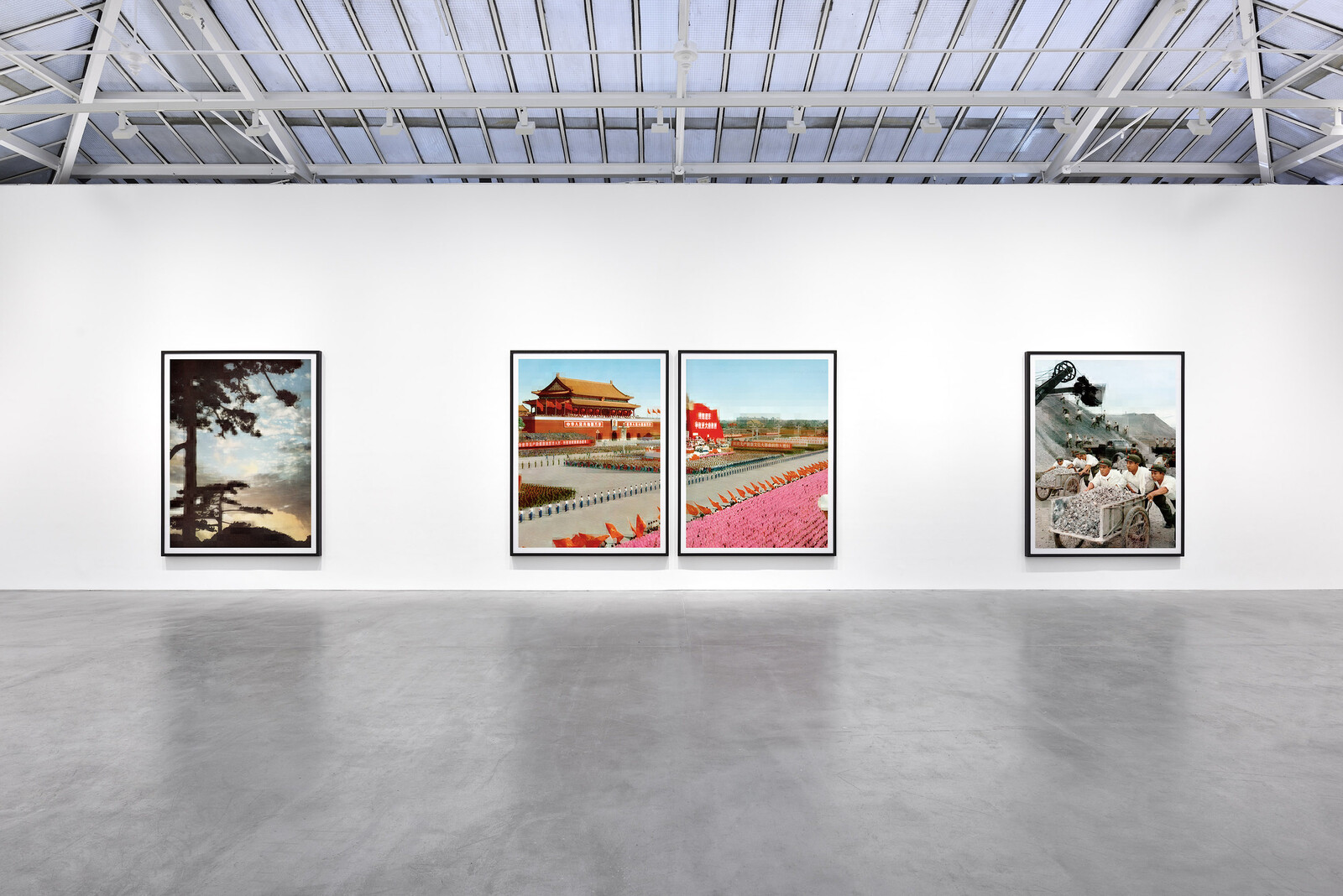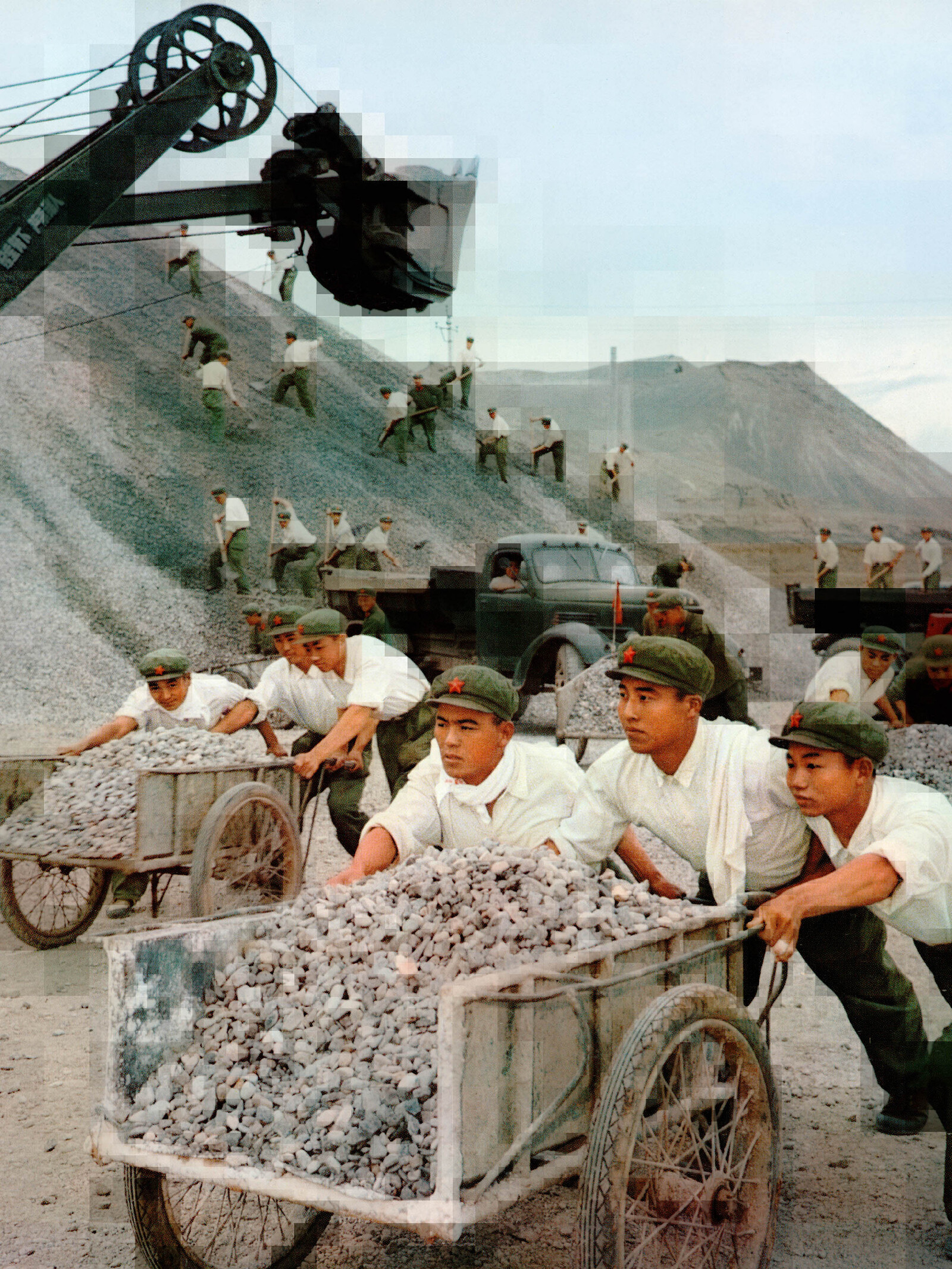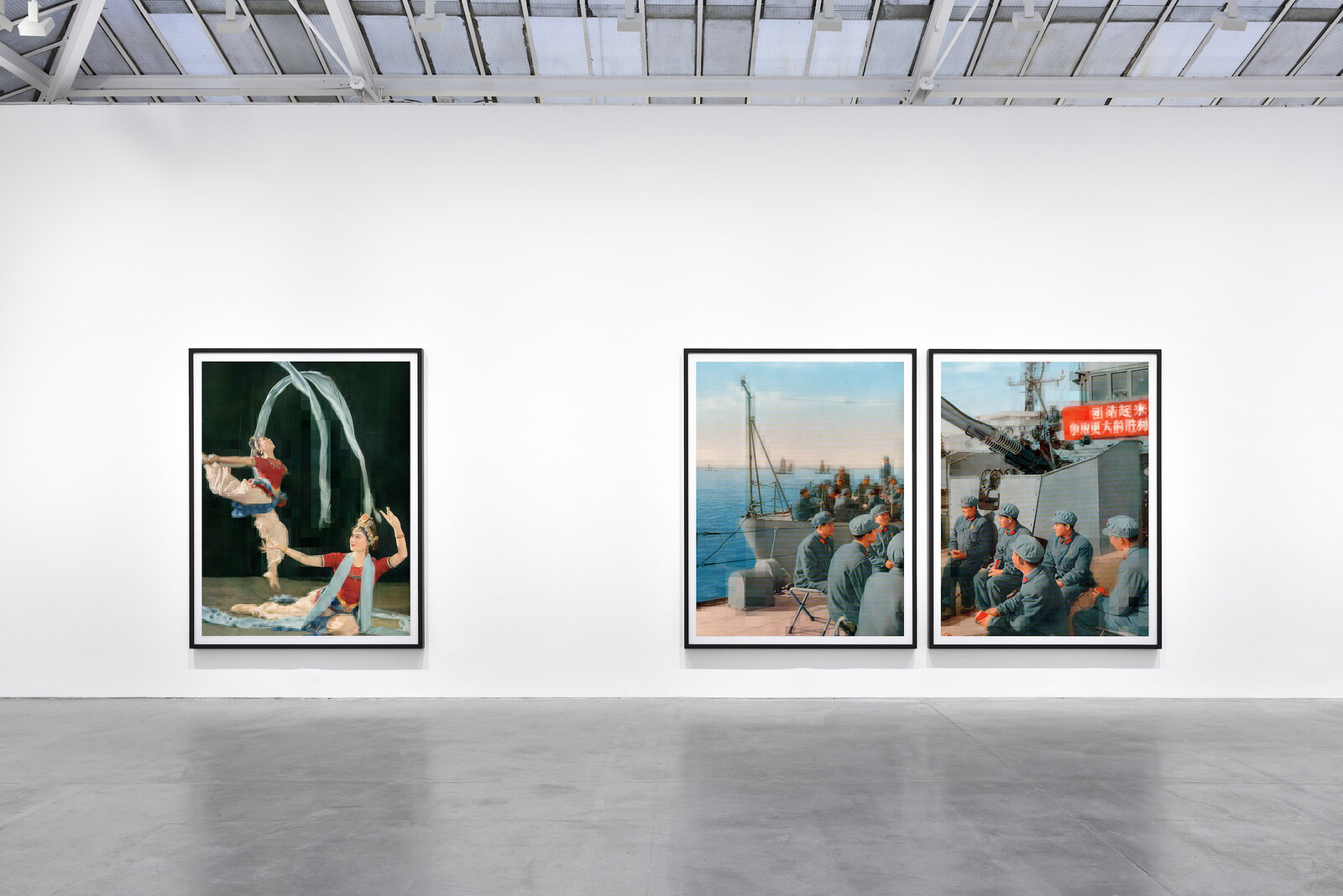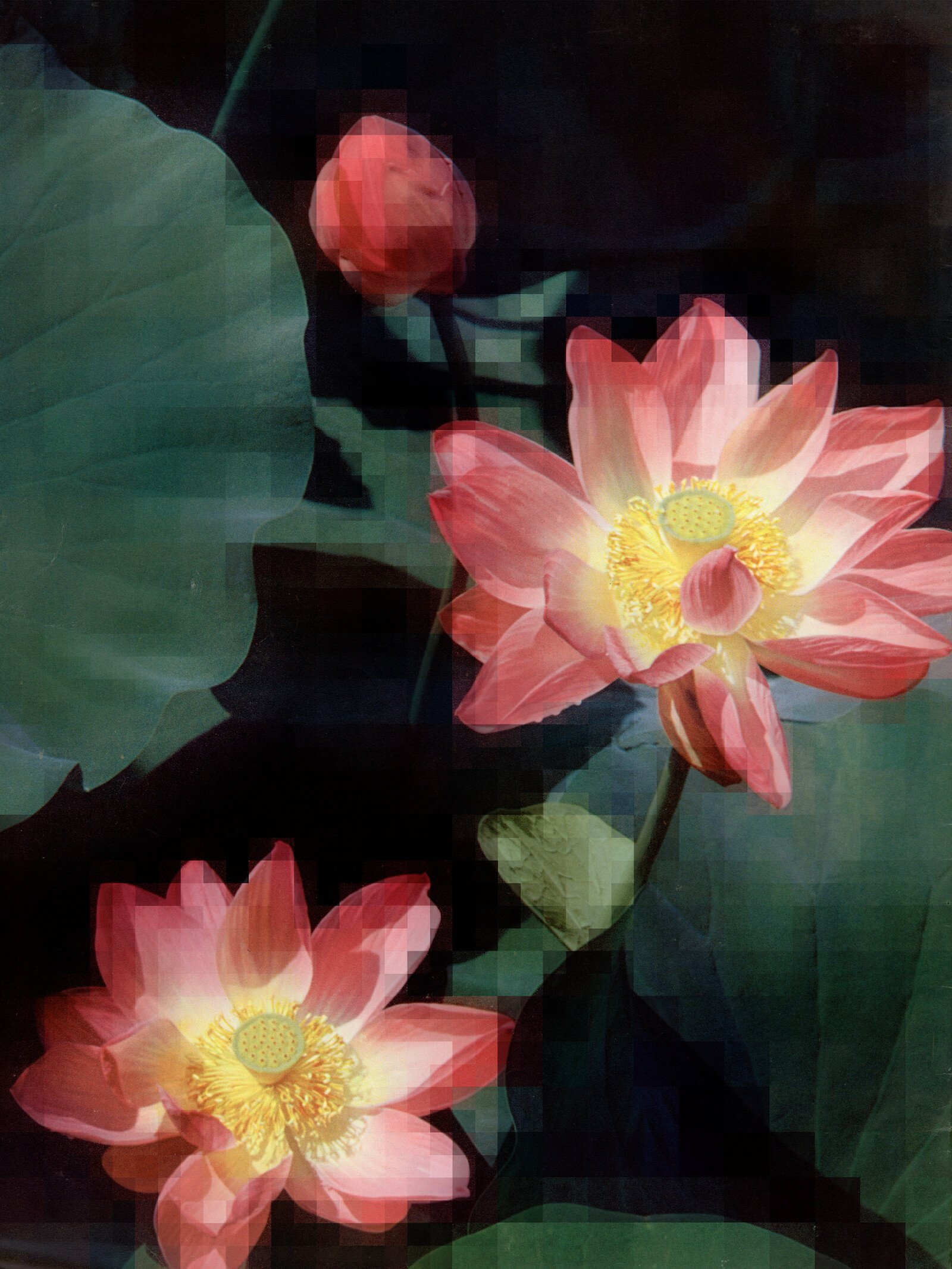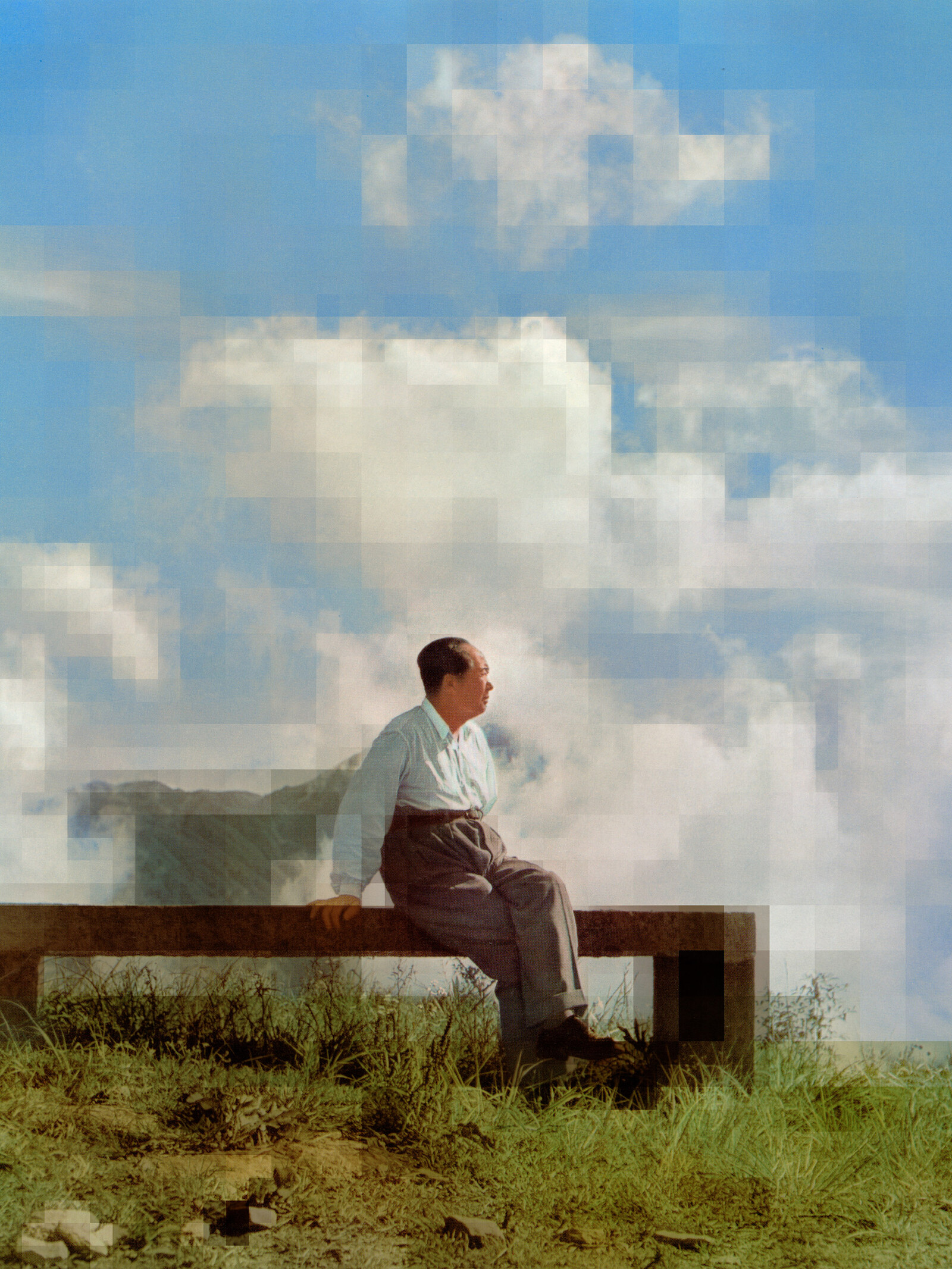The propaganda photographs of Chairman Mao, miners, dancers, rallies, and flowers reproduced in Thomas Ruff’s “tableaux chinois” look magnificent. Their colors are warm and bright: the grass is the greenest of green, skies blue beyond belief, the Chairman radiates kind-heartedness. Propaganda might at first seem an odd motif for an artist interested in the camera as a machine for recording and rendering objects into reliable flatness. But in addition to testing the limits of the camera’s detachment, Ruff has—going back to his series “Plakate” (1996–99)—also interrogated its capacity to glorify.
Think of the passport-style photographs in his “Portraits” from the 1980s: blown up to overwhelming sizes, the anonymous subjects are transformed into bureaucratic demi-gods. Or take his colossal C-prints of the heavens (“Stars,” 1990): in images taken from an observatory, the light from innumerable stars and galaxies scatters over a black abyss. The apparent neutrality of Ruff’s images—too much to take in all at once—can be grandiose, eulogistic.
Here, Ruff has scanned propaganda images taken from the Chinese-produced European magazine La Chine, published between the 1950s and ’70s, and converted the analog halftone pattern of the scans into a pixel structure. He has then placed the digitally built images over the scan of the original. The pixel structure is clearly visible as large blurry squares which stack together to form larger squares. In some areas, he has removed the digital layers, leaving the original halftone pattern intact. Ruff’s technical interventions introduce an additional movement between clarity and distortion into these dramatic images, with the eye seeking out a stable fact on which to rest amidst the stretching of the truth.
In layering the digital over the analog, Ruff gestures to the separation between the propaganda image and reality. But the more interesting cleavage is between the lustrous authority of agitprop and the technical neutrality of its production, the pragmatism and detachment of Ruff’s own practice. On this path, Warhol is a guiding light. Indeed, a floral still life (tableau chinois_10, 2019) hangs on the central wall beside a portrait of the Chairman (tableau chinois_09, 2019).
These images take a slightly different tack from Ruff’s earlier work, which is often preoccupied with objectivity and thingness, Sachlichkeit. Here, we are deep into the world of lies and manipulation. But Ruff’s interest remains in the predispositions of photography to wash the life out of its subjects as it exalts them. The show is not about how the camera stretches the truth so much as about how entire realities and image worlds can be built out of dispassionate processes, technical neutrality, smoothness.
These images fail, though, as a consideration of Chinese politics, or of China’s relation with the West. The press release invites us to read the images in this light, stating that China is “technologically advanced but simultaneously ideologically regressive” and that the images “embody this dichotomy.” Hardly a compelling opposition: the idea that technological development would go hand-in-hand with respect for human rights has long ceased to be credible, if it ever was. Besides evoking the retro euro sinophilia of the 1960s and ’70s they fail to engage with the question of how China and the West may co-exist, nor does Ruff grapple with current narratives of the decline of American and European democracies in the face of disinformation and social media. The respect for truth is not a given in technological societies with minimal government regulation, either. The work lacks this awareness, and together with Ruff’s choice of images from half a century ago to make a point about China today, the show risks a puffed-up provincialism.
Ultimately, “tableaux chinois” is more convincing as a commentary on photography—as a democratic medium with the potential for authoritarian co-option—than a primer on East-West relations. And Ruff’s is a democratic practice: breaking down the structures of totalitarian imagery, stretching and revealing its component parts.

